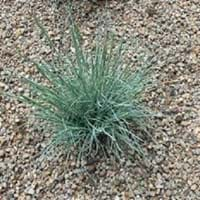Life Span
Perennial
Perennial
Origin
World/Pandemic
Mid-Atlantic United States, Southeastern United States, Central United States, South-Central United States
Types
Large Blue Fescue , Sea Urchin Blue Fescue, Elijah Blue blue fescue
not available
Habitat
Moist Soils, Rocky areas, Well Drained
bottomlands, Depression on prairies, ditches, Floodplains, Riverbanks, stream banks, Swamps
USDA Hardiness Zone
4-9
4-9
AHS Heat Zone
Not Available
9-1
Sunset Zone
Not Available
1a, 1b, 2a, 2b, 3a, 3b, 4, 5, 6, 7, 8, 9, 10, 11, 12, 13, 14, 15, 16, 17, 18, 19, 20, 21, 22, 23, 24
Habit
Clump-Forming
Oval or Rounded
Flower Color
Not Available
Yellow, Brown
Flower Color Modifier
Bicolor
Bicolor
Fruit Color
Not Available
Black
Leaf Color in Spring
Not Available
Green, Light Green
Leaf Color in Summer
Light Green
Green, Light Green
Leaf Color in Fall
Not Available
Yellow, Light Yellow, Tan
Leaf Color in Winter
Not Available
Not Available
Leaf Shape
Grass like
Oval with a pointed tip and fine teeth along their edges
Plant Season
Not Available
Spring, Summer, Fall, Winter
Sunlight
Full Sun, Partial Sun
Full Sun, Partial Sun
Growth Rate
Not Available
Fast
Type of Soil
Clay, Loam, Sand
Clay, Loam, Sand
The pH of Soil
Acidic, Neutral
Acidic, Neutral
Soil Drainage
Average
Average
Bloom Time
Not Available
Spring
Repeat Bloomer
Not Available
No
Tolerances
Not Available
Wet Site, Pollution, Soil Compaction
Where to Plant?
Container, Ground
Ground
How to Plant?
Seedlings
Seedlings
Plant Maintenance
Medium
Low
Watering Requirements
Requires regular watering
Requires a lot of watering, Requires regular watering
In Summer
Lots of watering
Lots of watering
In Spring
Moderate
Moderate
In Winter
Average Water
Average Water
Soil pH
Acidic, Neutral
Acidic, Neutral
Soil Type
Clay, Loam, Sand
Clay, Loam, Sand
Soil Drainage Capacity
Average
Average
Sun Exposure
Full Sun, Partial Sun
Full Sun, Partial Sun
Pruning
Cut or pinch the stems, Remove damaged leaves, Remove dead leaves, Remove dead or diseased plant parts
Prune in the late winter or spring, Remove dead or diseased plant parts, Shape and thin as needed
Fertilizers
Apply 10-10-10 amount
All-Purpose Liquid Fertilizer, No need to fertilize every year
Pests and Diseases
Red blotch
Aphids, Red blotch, Sawfly Larvae
Plant Tolerance
Not Available
Pollution, Soil Compaction, Wet Site
Flowers
Insignificant
Showy
Flower Petal Number
Single
Not Available
Showy Foliage
Not Available
Yes
Foliage Texture
Fine
Medium
Foliage Sheen
Matte
Matte
Attracts
Birds, Butterflies
Not Available
Allergy
Not Available
Asthma
Aesthetic Uses
Ground Cover
Showy Purposes
Beauty Benefits
Not Available
Not Available
Environmental Uses
Air purification, Provides ground cover
Erosion control, Wildlife
Medicinal Uses
Not Available
No Medicinal Use
Part of Plant Used
Flowers, Seeds
Whole plant
Other Uses
Used as Ornamental plant
used for making roof trusses, poles, joists, piles, Used in construction, Used in Furniture
Used As Indoor Plant
Insignificant
No
Used As Outdoor Plant
Yes
Yes
Garden Design
Edging, Groundcover, Lawns and Turf, Mixed Border, Rock Garden / Wall
Feature Plant, Shade Trees
Botanical Name
FESTUCA
BETULA nigra
Common Name
Blue Fescue, Field Fescue
River Birch
In Hindi
ब्लू हुक्म
River Birch
In German
blau -Schwingel
Fluss Birch
In French
bleu fétuque
Birch river
In Spanish
azul festuca
river Birch
In Greek
μπλε Φεστούκα
ποταμός Birch
In Portuguese
azul festuca
river Birch
In Polish
niebieski Kostrzewa
Rzeka Birch
In Latin
blue Fescue
Betula
Phylum
Magnoliophyta
Magnoliophyta
Class
Liliopsida
Magnoliopsida
Family
Poaceae
Betulaceae
Clade
Angiosperms, Commelinids, Monocots
Angiosperms, Eudicots, Rosids
Tribe
Poeae
Not Available
Subfamily
Pooideae
Not Available
Number of Species
Not Available
Season and Care of Blue Fescue and River Birch
Season and care of Blue Fescue and River Birch is important to know. While considering everything about Blue Fescue and River Birch Care, growing season is an essential factor. Blue Fescue season is Not Available and River Birch season is Not Available. The type of soil for Blue Fescue is Clay, Loam, Sand and for River Birch is Clay, Loam, Sand while the PH of soil for Blue Fescue is Acidic, Neutral and for River Birch is Acidic, Neutral.
Blue Fescue and River Birch Physical Information
Blue Fescue and River Birch physical information is very important for comparison. Blue Fescue height is 15.24 cm and width 25.40 cm whereas River Birch height is 1,220.00 cm and width 1,220.00 cm. The color specification of Blue Fescue and River Birch are as follows:
Blue Fescue flower color: Not Available
Blue Fescue leaf color: Not Available
River Birch flower color: Yellow and Brown
- River Birch leaf color: Green and Light Green
Care of Blue Fescue and River Birch
Care of Blue Fescue and River Birch include pruning, fertilizers, watering etc. Blue Fescue pruning is done Cut or pinch the stems, Remove damaged leaves, Remove dead leaves and Remove dead or diseased plant parts and River Birch pruning is done Prune in the late winter or spring, Remove dead or diseased plant parts and Shape and thin as needed. In summer Blue Fescue needs Lots of watering and in winter, it needs Average Water. Whereas, in summer River Birch needs Lots of watering and in winter, it needs Average Water.





